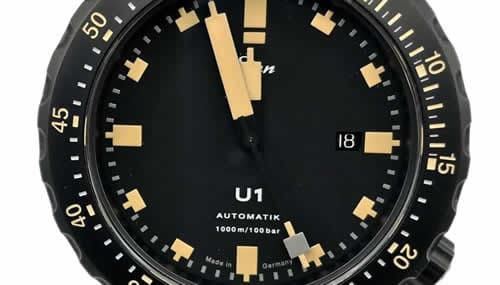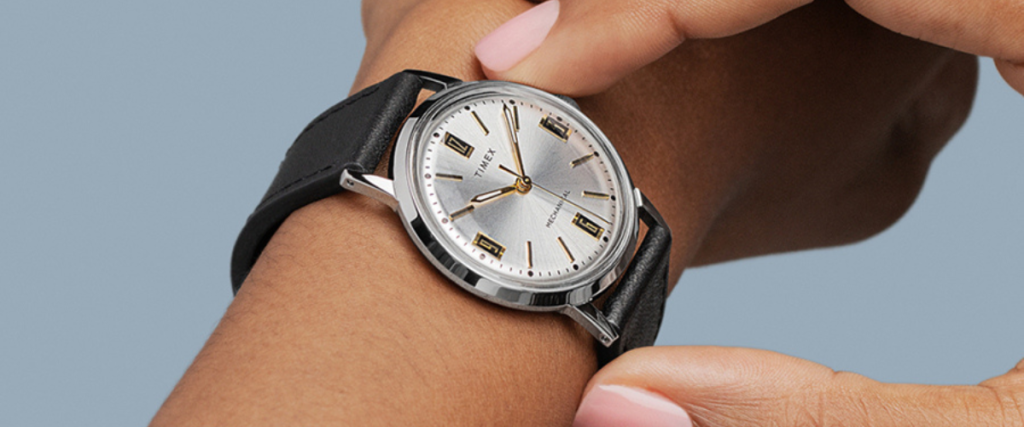
In the world of luxury watchmaking, you’re going to encounter many different collections and designs. While new ideas land on the market, there’s a traditional passion in watchmaking that can be seen in many popular styles.
The divers watch is a great, long-standing example, as it offers a beautiful combination of functionality and style. In the beginning, divers watches were built to cater to those interested in underwater exploration. Hence, the name, a divers watch, is much more than just functionality, as it finds itself in the luxury category.
Even if you’ve never owned one, there’s a good chance a divers watch has caught your eye at some point in time. This article highlights the features that make a divers watch one of the most recognizable styles in watchmaking.
History of Divers Watches

There are varying unique characteristics that make a divers watch as we know it today. Without these details, then I’d say you wouldn’t be able to call it a divers watch. It includes much more detail than you might expect.
Between the 1930s and 1950s, many advancements were seen in the look and capability of the divers watch. I have to give my thanks to Rolex, as they coined the beginnings of how the divers watch is used and worn today.
It surprised me to learn that some of the earliest models would only function 30 to 70m underwater. There were a few limitations in the early days, but the style’s popularity continued to grow and evolve regardless.
Aside from their historical relevance, their characteristics are a crucial part of the watch’s look and use case. Keep in mind, since a divers watch is built to be used underwater, it won’t meet the same standards as many other types of watches.
Even if it’s obvious, I find it important to highlight that a divers watch will always come with a pretty impressive water resistance. Although 100-meter resistance is seen as a production standard, this is far from the limits of many divers watches.
The Key Features of Divers Watches
Other notable aspects of this type of watch include pressure durability, lumed markers, and personal favorites like corrosion resistance or a unidirectional bezel. The style of a divers watch requires a particular taste, but some of this can be overlooked due to functionality alone.
Even though divers watches aren’t a big sell for me personally, I still appreciate their luxurious look. You’re likely to run into many varieties when it comes to the divers design. However, you should always keep an eye out for the key features every diver watch should bring to the table.
Water Resistance
At a glance, I can see why anyone would be enamored with the beauty of a divers watch. The only thing that bothers me sometimes is that many people completely ignore the watch’s functionality. You might not know that there are precision-engineered gaskets around the crown, case back, as well as the crystal for a reliable seal.
I always find it crucial to mention that water resistance doesn’t just relate to functionality in a divers watch. It’s part of engineering, materials, and compliance, which offers a stamp of approval and assurance.
Rotating Bezel
If you’re new to the world of watchmaking, it’s helpful to understand that the bezel is for more than just aesthetics. This is especially true when it comes to a rotating bezel. I’m not a diver myself, but I can appreciate the functionality that goes into the bezel of a diver watch.
The rotating bezel works to measure how long a diver has been underwater. Moreover, they can also rotate counterclockwise to avoid the risk of an accidental adjustment. Another detail I really love is that many rotating bezels are built with a unidirectional design. This ensures the bezel can’t be pushed in the wrong direction.
Part of what drives my interest in divers watches is that not all of their bezels are exactly the same. For example, I really appreciate rotating bezels that provide information on depth. Overall, the beauty, functionality, and fail-safes in many divers watches are part of what keeps me coming back for more. While functionality is really important here, many divers wouldn’t be able to use these watches if it weren’t for the added lume.
Lume
Considering the general low light conditions under the water, luminosity is a vital part of any divers watch. This can be seen in many unique designs, but they all serve the same purpose. For the most part, lume can be seen on the hands and markers on a divers watch.
I always like to tell people that this is commonly coupled with an anti-reflective coating on the crystal for an ever clearer look. Although I’m not a huge fan of this choice, many divers watches come with large hands and markers. This is for easy legibility, but I’m just not very keen on the bulkier aesthetic.
I was actually kind of surprised to see there are certifications for this category as well. A certified divers watch remains readable at a distance of 9.8 inches. It might not sound like much, but I can see how it would go a long way in dark waters. Being able to track time as a diver is a big aspect of underwater safety. From oxygen to timing decompression stops, divers need accurate readings to operate as safely as possible.
Durability
One thing that immediately came to mind when I first started getting into divers watches is their durability. With all of the wear and tear of operating underwater, it makes you wonder how that affects the watch over time.
Thankfully, engineering has you covered with a focus on durability from several angles. From corrosion-resistant materials to features built with water in mind, a quality divers watch is expected to last. Not only longevity but consistency in day-to-day functionality.
As I learned more about how divers watches are made, I only became more interested in the finer details. Durability is also seen in the straps that accompany them, as well as in the rugged and bold construction meant for harsh conditions.
Preferences aside, divers watches can be worn with a variety of different straps, although most people go with stainless steel or titanium. For me, I honestly prefer fabric straps. More specifically nylon, as they’re highly water resistant and can quickly dry in the sun. I’m no expert diver, but I love the idea of a luxury watch that I can wear without having to worry much.
Legibility
Some of this falls into the discussion surrounding lume, but legibility is considered much more than that from a design perspective. As mentioned before, legibility is crucial for divers, so it isn’t something that’ll be lacking in a quality timepiece.
Although many divers watches can come with bulkier hands and surrounding features, many of them still take a minimalist approach. I really appreciate the small decisions that lead to the best legibility possible, regardless of lighting conditions.
Watches built with divers in mind tend to avoid clutter on the dial and surrounding components. I enjoy the fact that they aren’t always visually complicated yet come with very intricate engineering and smart design.
Aside from its use in the water, the focus on legibility makes a divers watch perfect for all-day wear. Once again, I’m not a diver by any means, but I can still see myself wearing a dive watch in many settings.
You might find others wearing it in a more casual outfit, but I feel they look best with a professional or sportier look. It always helps me to get into the mechanics of a watch to help guide my decision-making. However, part of this includes considering if the features of this watch design are a fit for you or not.
Do You Need a Divers Watch?
Based on the notable features of a divers watch, you can see why they would be catered to those who like spending time in the water. Aside from their essential role in many dive expeditions, they’re a timepiece that is seen as staples with many luxury watch brands.
For me, I find interest in dive watches for pure aesthetics. Diving isn’t an activity that’s high on my list, but I can’t ignore the beauty these timepieces have to offer my collection. Taking a more logical stance here, these watches are tailored to divers. Then again, if you favor water resistance you can rely on, a dive watch isn’t a bad way to go.
Although the watch comes with a pretty obvious use case, I sometimes forget that collectors find their interest from an entirely different standpoint. Even if they intend to use the watch, many unique dive watches are closely watched by collectors from all over the world.
I feel the truth is that almost anyone can benefit from a divers watch, but how you determine the benefits comes down to what you value most. Whether it’s functionality, looks, branding, or something like a special edition, I’ve always felt there’s plenty to love about a quality dive watch.
Let’s Wrap This Up
Maybe you’re new to luxury watches or have yet to own a divers of your own, but it’s important to understand the ins and outs first. Most people new to high-end watchmaking aren’t aware of the intricacies that come into play during the whole experience.
While divers watches are aimed at a particular demographic, I can see why they’ve become so popular among everyday people. If you’re looking for a divers of your very own, you can’t go wrong with speaking with us at Exquisite Timepieces. We have the industry and hands-on experience you need to find what looks and feels best for you.


















